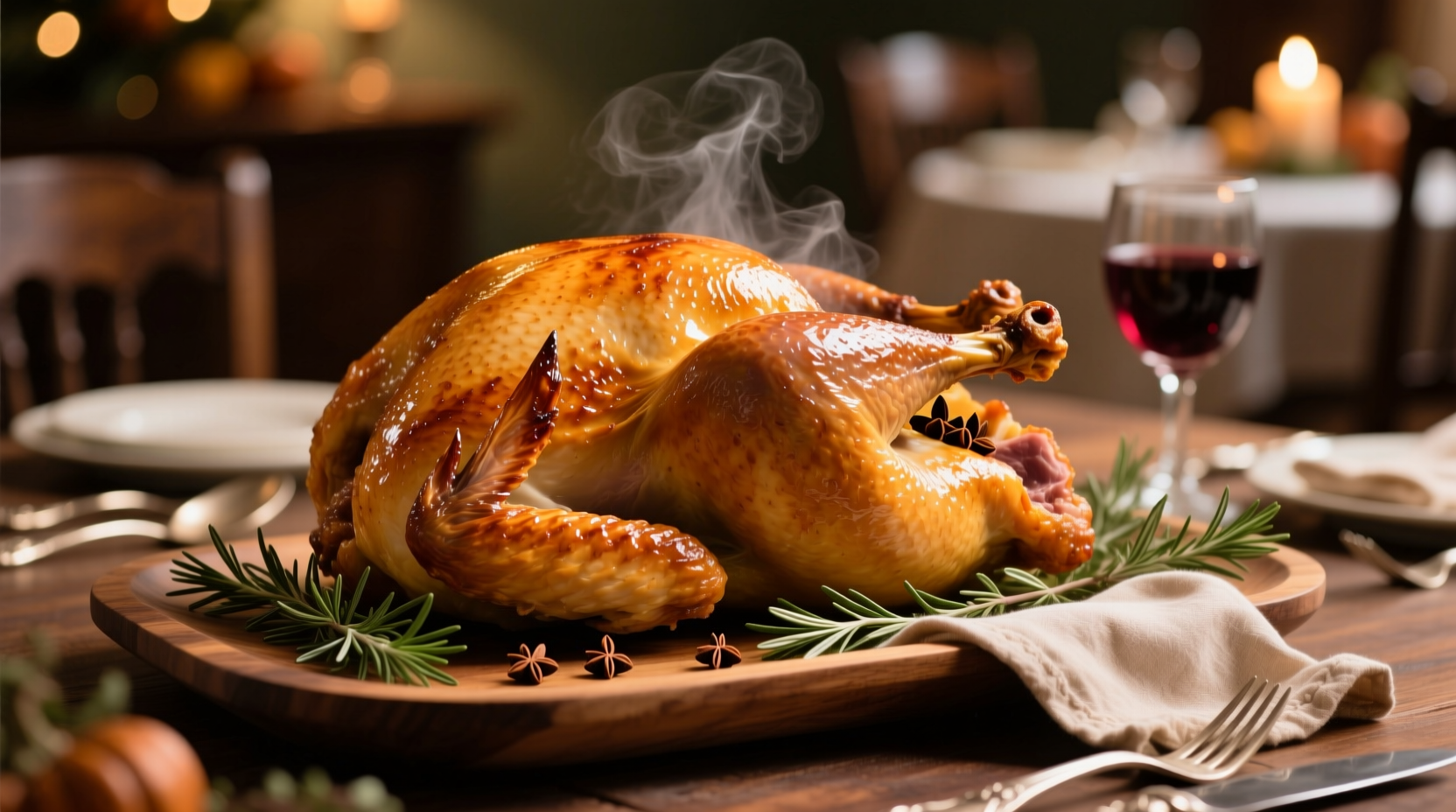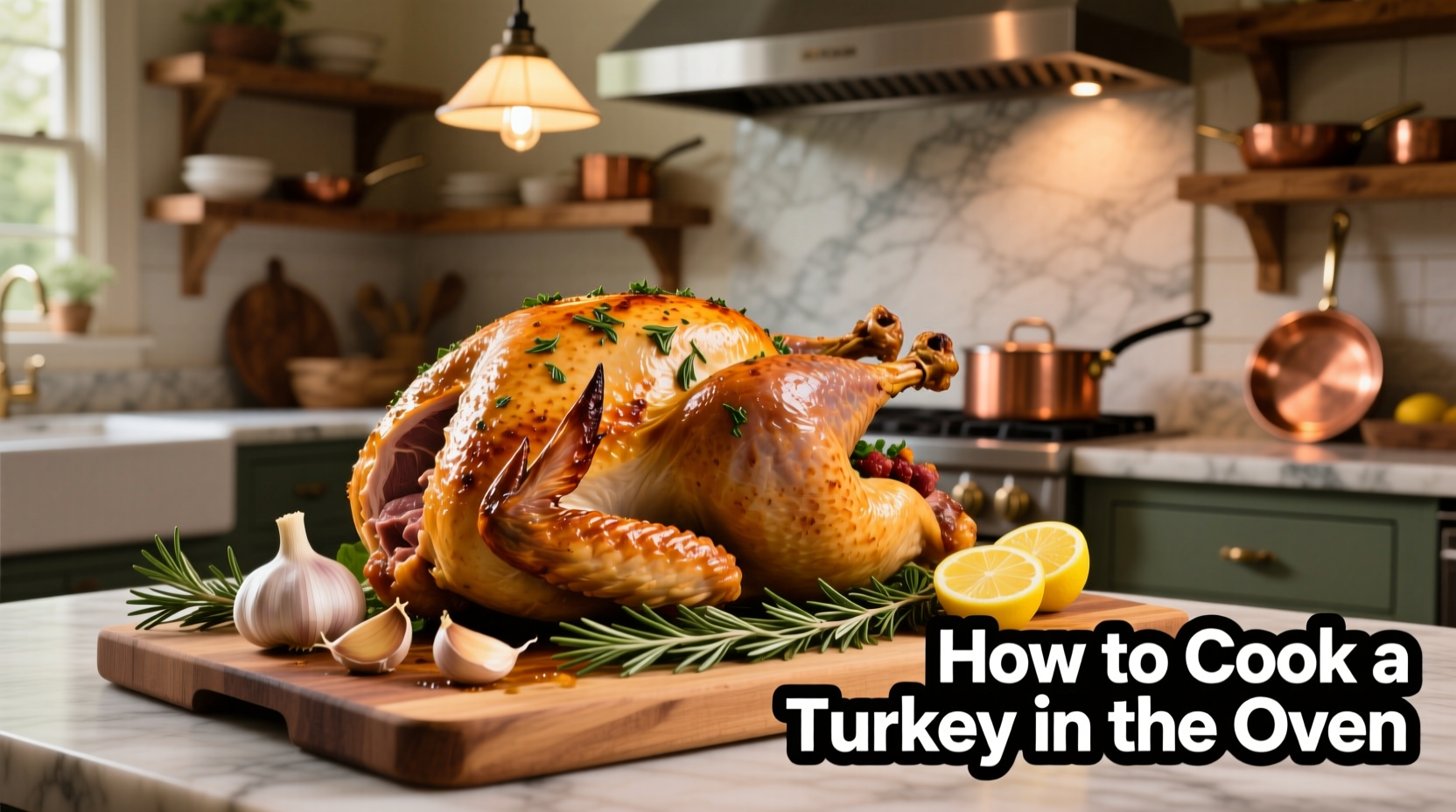The perfect oven-roasted turkey requires proper preparation, precise temperature control, and adequate resting time. Start by thawing your turkey safely in the refrigerator (allow 24 hours per 4-5 pounds), then season generously inside and out. Roast at 325°F until the thickest parts of the breast and thigh reach 165°F on a meat thermometer—approximately 13 minutes per pound for an unstuffed bird. Let the turkey rest for 30-45 minutes before carving to retain juices.
Mastering the Art of Oven-Roasted Turkey
Nothing says celebration quite like a perfectly roasted turkey centerpiece. Whether you're preparing your first holiday meal or refining your technique after years of experience, understanding the science behind turkey roasting transforms ordinary results into extraordinary ones. This comprehensive guide walks you through every critical step with professional techniques that guarantee moist meat, crispy skin, and food-safe preparation.
Your Turkey Preparation Timeline
Successful turkey cooking begins days before roasting. Proper planning prevents last-minute stress and ensures food safety. Follow this preparation sequence for optimal results:
Safe Thawing Methods (3-5 Days Before Cooking)
Never thaw your turkey at room temperature—this creates dangerous bacterial growth zones. The USDA Food Safety and Inspection Service recommends two safe methods:
| Thawing Method | Time Required | Important Notes |
|---|---|---|
| Refrigerator Thawing | 24 hours per 4-5 pounds | Maintains safe temperature (40°F or below); keep on tray to catch drips |
| Cold Water Thawing | 30 minutes per pound | Change water every 30 minutes; cook immediately after thawing |
For a 12-14 pound turkey, refrigerator thawing requires approximately 3-4 days. This method preserves texture better than rapid thawing while keeping the bird in the safe temperature zone. The USDA provides detailed thawing charts based on precise weight calculations.
Pre-Roast Preparation (1-24 Hours Before Cooking)
Seasoning and trussing happen during this critical window. Professional chefs recommend these preparation techniques:
- Dry brining: Rub 1 tablespoon kosher salt per 5 pounds of turkey under the skin and on the surface 24 hours before cooking. This seasons deeply without making the skin soggy.
- Butter infusion: Gently separate the skin from breast meat and rub compound butter directly on the flesh for maximum flavor penetration.
- Trussing: Tie legs together with kitchen twine to promote even cooking, but leave wings untied to prevent overcooking.

The Roasting Process: Temperature Control Secrets
Temperature management makes or breaks your turkey. Most home cooks make critical errors with oven settings and timing that lead to dry results.
Optimal Roasting Temperature
While many recipes suggest higher temperatures, food science reveals 325°F as the ideal roasting temperature. Higher temperatures (like 400°F+) create an exterior cooking too rapidly while the interior remains undercooked. Lower temperatures (below 300°F) keep the turkey in the bacterial danger zone too long. The FDA recommends maintaining proper temperature control to prevent foodborne illness.
Accurate Cooking Time Guidelines
Forget unreliable "pounds per hour" calculations. Instead, monitor these critical indicators:
- Unstuffed turkey: Approximately 13 minutes per pound at 325°F
- Stuffed turkey: Add 30-45 minutes to total cooking time
- Critical checkpoint: Insert meat thermometer into thickest part of breast and inner thigh without touching bone
When the thermometer reads 160°F in both locations, remove the turkey from the oven. Carryover cooking will raise the temperature to the safe 165°F minimum while preserving moisture. The USDA confirms 165°F as the safe minimum internal temperature for poultry.
Avoiding Common Turkey Disasters
Even experienced cooks encounter these frequent problems. Here's how to prevent them:
Dry Breast Meat
The breast cooks faster than dark meat, often resulting in dry white meat. Counter this by:
- Shielding breast area with foil during first 2/3 of cooking time
- Using a remote thermometer to monitor breast temperature separately
- Positioning turkey with breast side facing oven's rear (coolest spot)
Undercooked Thighs
Dark meat requires higher final temperature for optimal texture. If thighs haven't reached 165°F:
- Remove breast portions once they hit 160°F and continue roasting thighs
- Use a convection oven setting to improve heat circulation
- Place turkey on a wire rack above roasting pan for better air circulation
The Critical Resting Period
Never skip resting time—this is where professional results separate from amateur attempts. During the 30-45 minute rest:
- Juices redistribute throughout the meat instead of running out when carved
- Internal temperature continues rising 5-10 degrees (carryover cooking)
- Proteins relax, creating more tender texture
Cover loosely with foil to maintain warmth without steaming the crispy skin. This resting period transforms good turkey into exceptional turkey.
Carving Like a Professional
Proper carving technique preserves your careful cooking efforts. Follow this sequence:
- Remove legs and thighs by cutting through hip joints
- Separate drumsticks from thighs with one clean cut
- Slice breast meat against the grain in 1/4-inch slices
- Angle knife slightly toward yourself for cleaner cuts
Keep your sharpest knife dedicated to carving—dull blades tear the delicate meat fibers. Serve immediately while the turkey remains at optimal serving temperature (140°F or above).
Turkey Troubleshooting Guide
Encountering issues? These solutions address common problems:
| Problem | Immediate Solution | Prevention for Next Time |
|---|---|---|
| Breast meat dry | Moisten slices with warm gravy | Shield breast with foil; monitor temperature separately |
| Skin not crispy | Return to oven at 450°F for 5 minutes | Dry skin thoroughly before roasting; avoid basting |
| Thermometer reads under 165°F | Return to oven; check every 10 minutes | Use oven thermometer; verify accuracy of meat thermometer |











 浙公网安备
33010002000092号
浙公网安备
33010002000092号 浙B2-20120091-4
浙B2-20120091-4